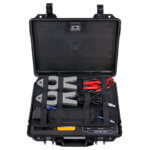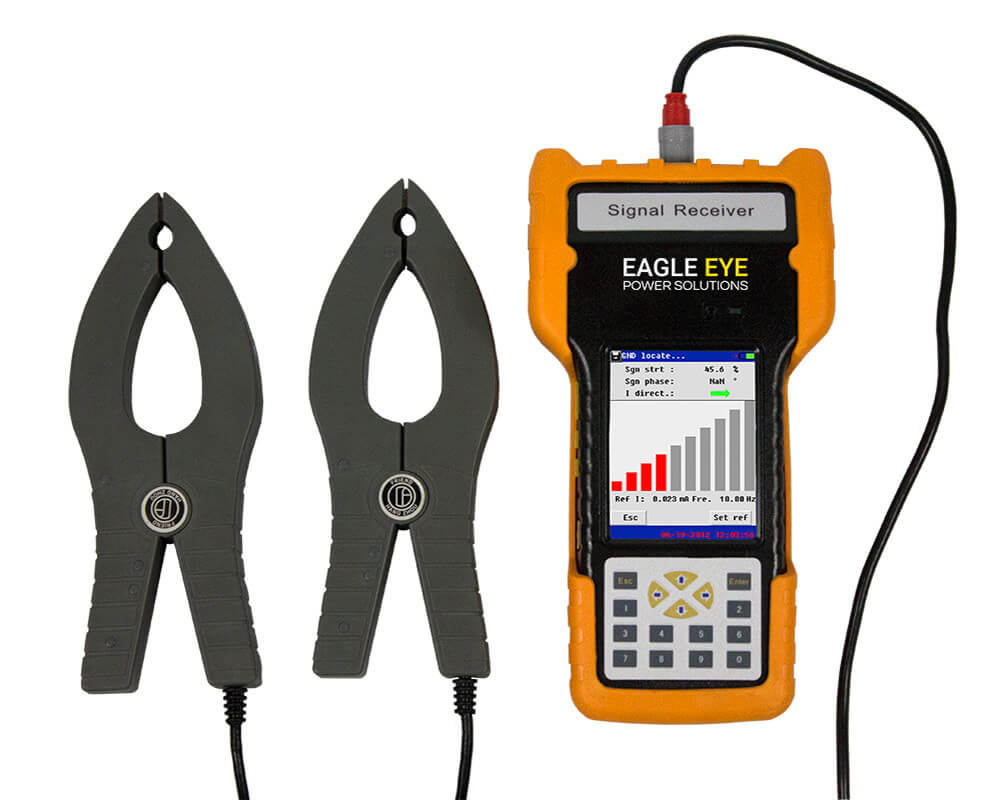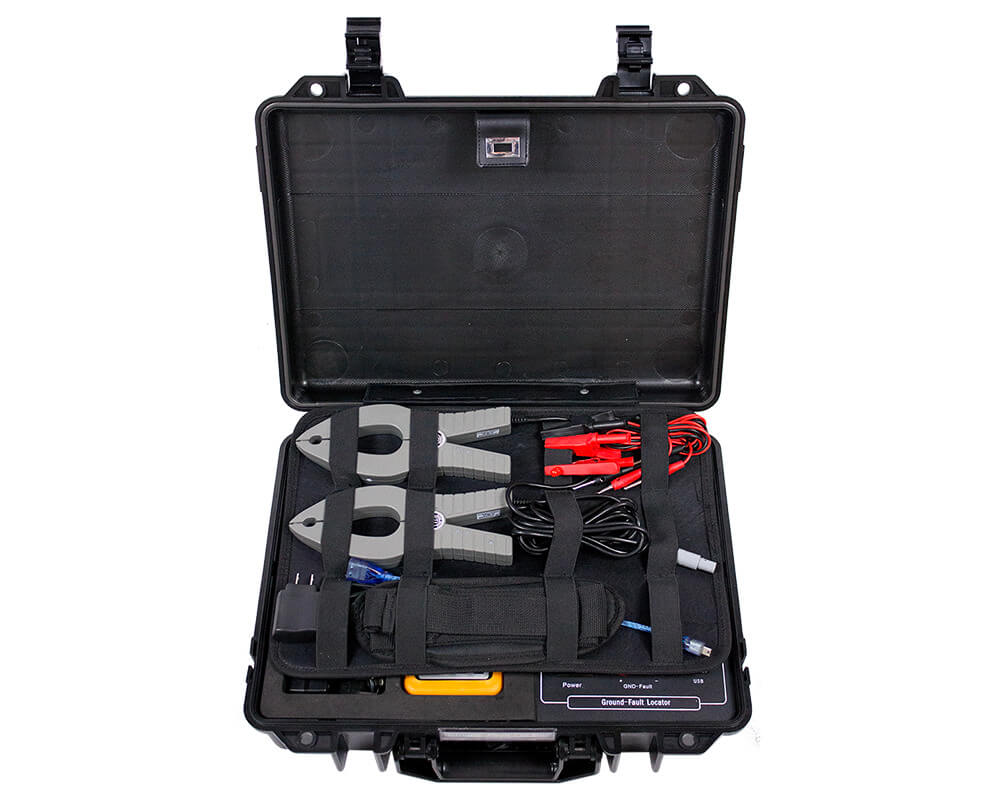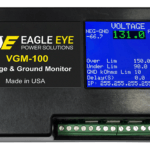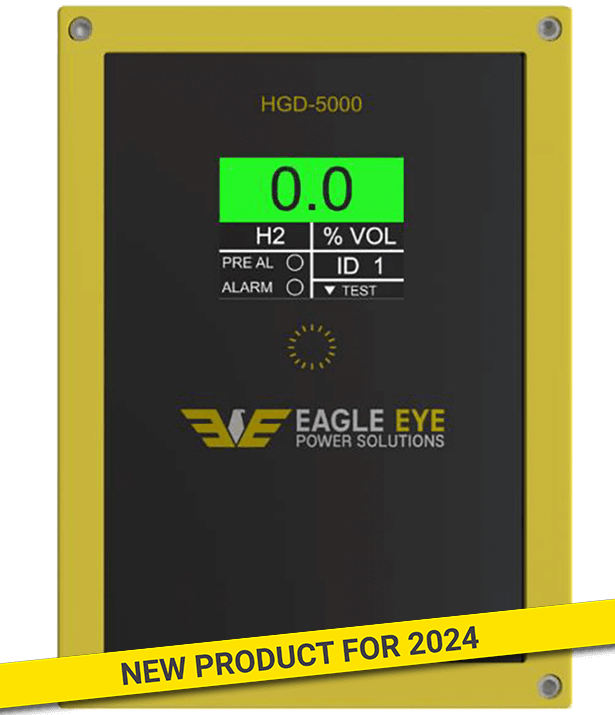GFL-1000 DC Ground Fault Detector & Locator
In Stock
Eagle Eye Power Solutions’ GFL-1000 Ground Fault Detector & Locator is an industry-leading testing instrument to identify faulty grounding where electrical cables have breakage and loss to the ground. The unit identifies the inadvertent ground by injecting a low-frequency signal on the faulted polarity. See how following the signal using the current clamps and portable receiver can determine the physical location of the ground fault. Measurement of online DC systems is possible as the output current of the GFL-1000 is very low but the output voltage can be up to 1000V. The GFL-1000 is also suitable for testing on solar applications with systems up to 1500V.
Compliance with NERC PRC005-6 requires that the battery and DC power system be inspected for inadvertent grounds every four months. If a ground fault exists, the GFL-1000 is the tool by which that fault can be located without the need to de-energize the live circuit.
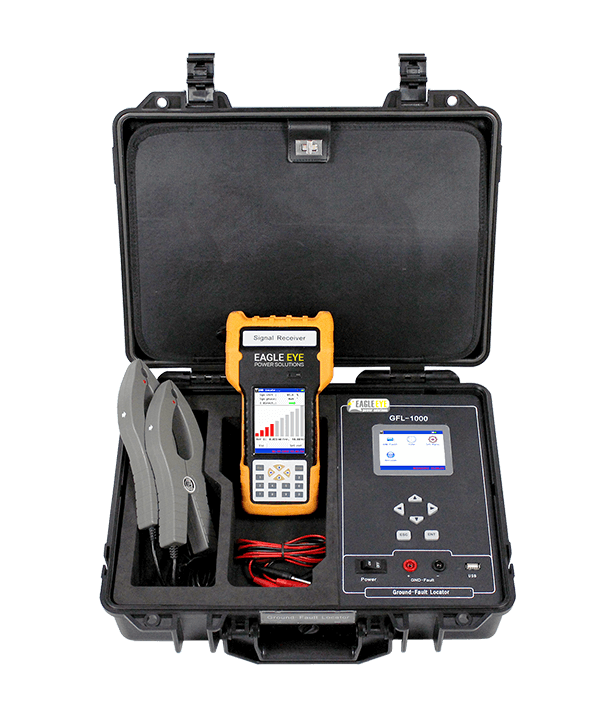
“This tool is bad a$$! If I had this 10 years ago, I would have a couple months of my life back. Also, it’s much safer for technicians. It was the perfect solution that we were looking for. I can’t say enough good things about it.”
Benefits
- Patented technology pinpoints current leakage fault with grounding resistance lower than 1MΩ
- Industry-leading ground fault testing for both online and offline DC systems
- Waveform analysis will analyze the interference signal in the circuit
- Wide output voltage range allows the GFL-1000 to meet the needs of your electronic equipment

Own a device that needs service or annual calibration?
Submit an RMA >Visit Eagle Eye University for information on our battery training courses.



